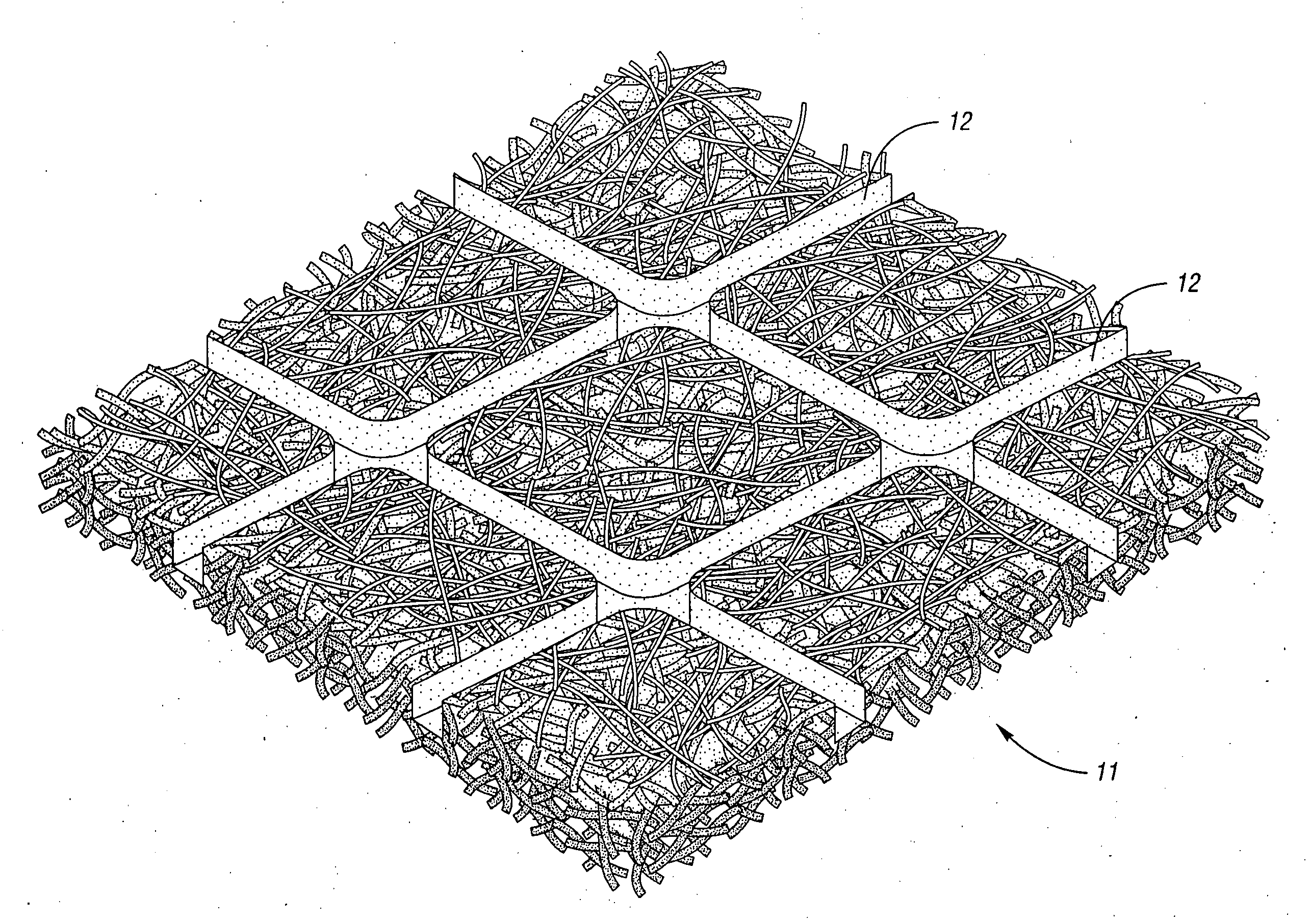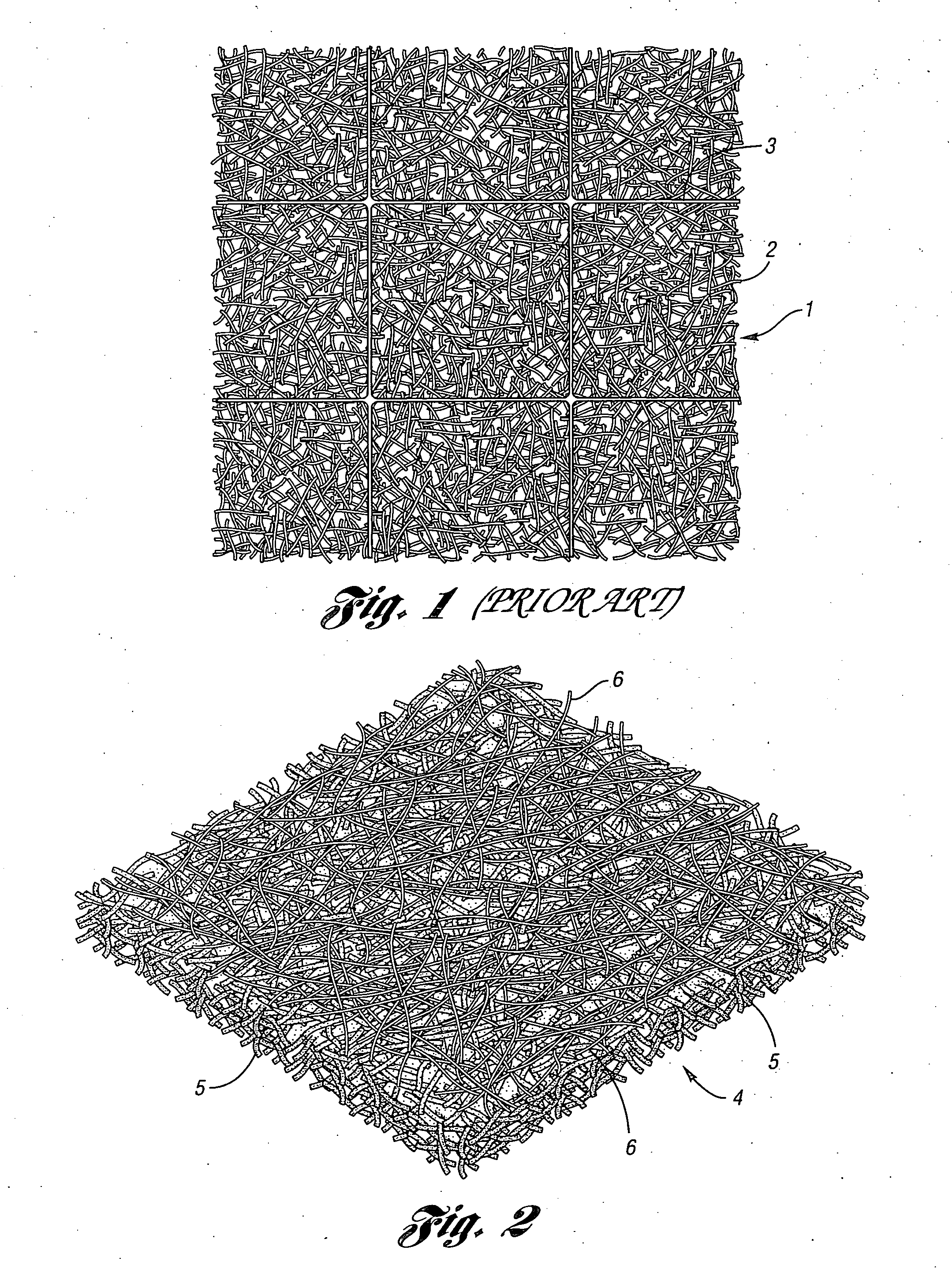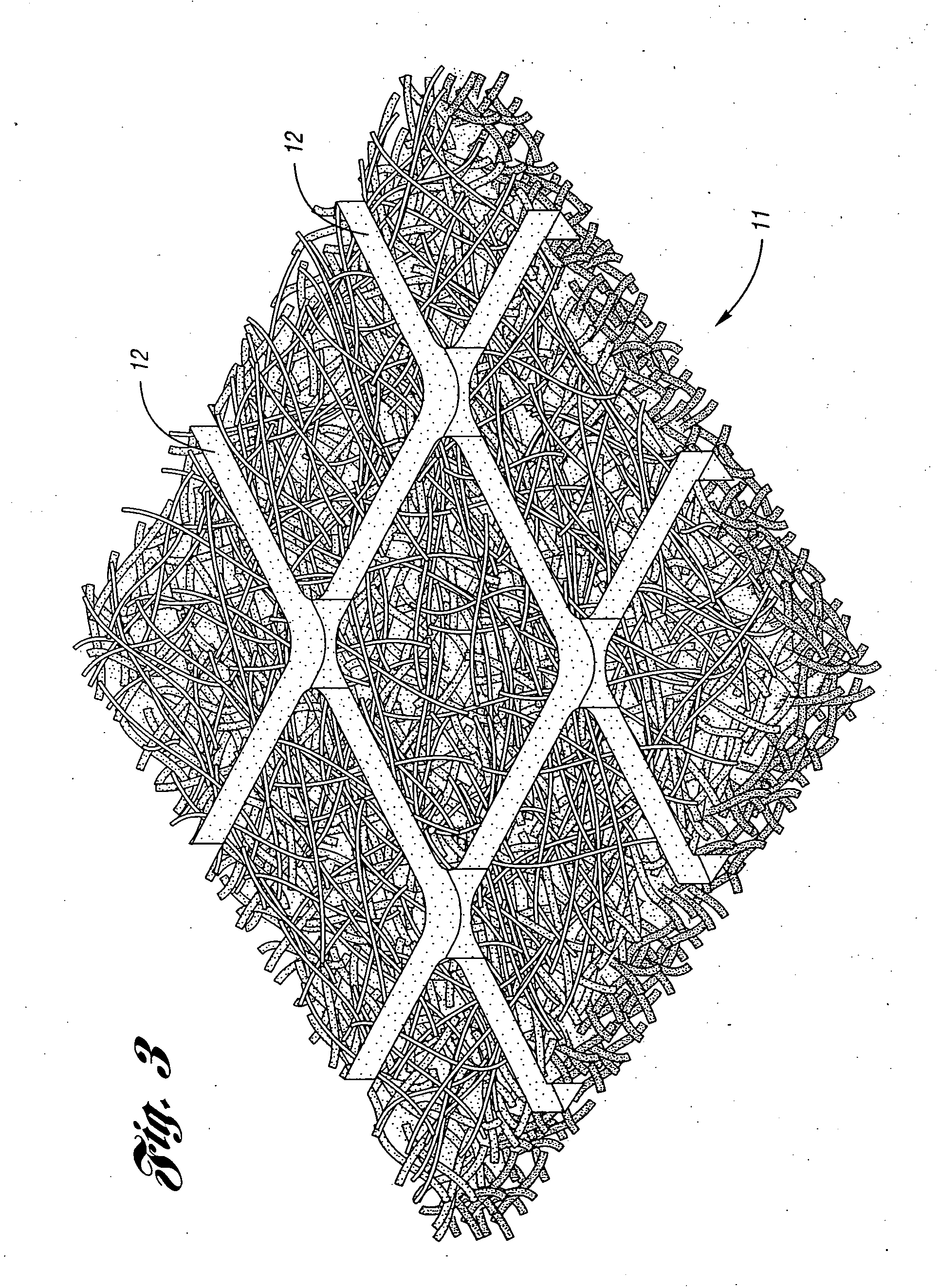Netless fiber mulch mats bound with bicomponent fibers
- Summary
- Abstract
- Description
- Claims
- Application Information
AI Technical Summary
Benefits of technology
Problems solved by technology
Method used
Image
Examples
example 1
[0047] A netless fiber mulch mat product is prepared by admixing in an air stream, 90 parts by weight of wood fibers prepared from pine and / or mixed wood species, 35% of which collect on a #8 sieve, and having an average length of about 0.75 inches (Profile Products thermally refined wood fiber), and 10% of synthetic fibers. The synthetic fibers constitute about 15% bicomponent staple fibers having a length of 2 inches (5 cm) and a polyester core and polyethylene sheath, available from Leigh Fibers, and about 85% polypropylene staple fibers, 1.5 inches average length, from Synthetic Industries, supplied separately. The fibers are deposited on a moving fiberglass belt of 96 inch (2.44 m) width in a thickness of about 0.62 inch and at a nonimal width of about 84 inches (2.13 m) and are preliminarily heated under a set of radiant panels which provide a strong surface bond to the bicomponent and polypropylene fibers, and then pass through two heated rollers having a length of 100 inches...
example 2
[0048] In a manner similar to Example 1, a netless product is prepared from a batt of 91% classified pine wood fibers, 32.5-40% of which collect on a standard ASTM #8 sieve, and 9% of bicomponent fibers with a polyester core and polyolefin sheath with a sheath melting temperature of 110° C., average lengths between 2-3 inches (5-7.6 cm), and a denier of 15. The batt is consolidated as in Example 1 to a finished product which is diamond embossed and has a nominal areal weight of 0.29 lbs / yd2 (110 g / m2).
[0049] Prior to consolidation, the mat, slightly greater than ⅜ inch (9.5 mm) in thickness, is heated by radiant heating. The batt surface temperature is initially becomes 275° F. (135° C.) and as the batt traverses below the radiant heat panels, the temperature increases to about 420° F. (216° C.) at the end of the heating cycle. No heat is applied for about 4 seconds as the traveling batt continues towards the consolidating rollers. The rollers are maintained a distance apart so as ...
PUM
 Login to View More
Login to View More Abstract
Description
Claims
Application Information
 Login to View More
Login to View More - R&D
- Intellectual Property
- Life Sciences
- Materials
- Tech Scout
- Unparalleled Data Quality
- Higher Quality Content
- 60% Fewer Hallucinations
Browse by: Latest US Patents, China's latest patents, Technical Efficacy Thesaurus, Application Domain, Technology Topic, Popular Technical Reports.
© 2025 PatSnap. All rights reserved.Legal|Privacy policy|Modern Slavery Act Transparency Statement|Sitemap|About US| Contact US: help@patsnap.com



